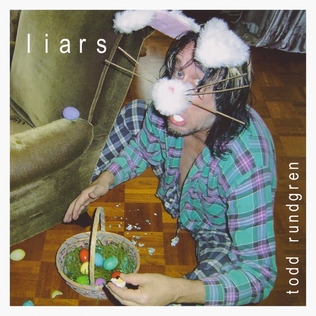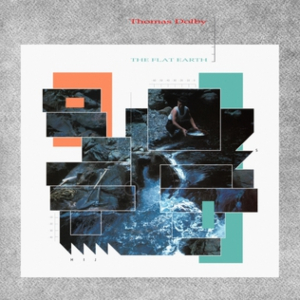That would have been fine, but then he decided to sell it through the Best Buy and Blockbuster chains as well, while some people who ordered it “exclusively” from the website a full year earlier still hadn’t received theirs yet. Perhaps it’s not fair to condemn the man, since he was, after all, trying to get music to the fans without being tied to the big corporations. But while using the chains certainly got it out to a lot of people, it didn’t really help the independent stores, which were still in the best position to promote Prince (sorry, TAFKAP) to the people who still cared about him. But there we go being naïve again.
This editorial notwithstanding, Crystal Ball certainly deserves mention if only for the utter sprawl of the contents, which are pulled from the guy’s entire career to date over three discs. To begin with, the opening ten-minute title track originally served the same purpose for the album first compiled in 1986, which itself evolved from an album called Dream Factory, the title track of which comes next. Both are funky, and a little strange, and would have been just as mystifying had they appeared back then.
About a third of the music comes from the fertile, fabled mid-‘80s period. “Movie Star” is a wonderful Morris Day template, while the man himself plays drums on all fifteen minutes of “Cloreen Bacon Skin”. “Sexual Suicide”, “Last Heart”, and “Make Your Mama Happy” come from the Dream Factory era, “Crucial” was cut from Sign "☮" The Times for “Adore”, “Good Love” is a “Camille” track given to a movie soundtrack, and “An Honest Man” is an a cappella Parade outtake; we’d’ve preferred the instrumental from Under The Cherry Moon.
That’s not to say the more recent tracks, mostly from the mid-‘90s, aren’t as interesting. Standouts include the P-Funk homage “Hide The Bone”, “Acknowledge Me” and “Interactive”, supposedly dropped from The Gold Experience in favor of other tracks, and certain remixes of existing tracks (“So Dark”, “Tell Me How U Wanna B Done”). “She Gave Her Angels” is just lovely, but “Strays Of The World” is overwrought, though the guitar solo redeems it. “The Ride” and “Days Of Wild” were recorded live with the New Power Generation, the latter notable for being nearly the last time he’d curse on stage, and “Goodbye” provides a nice slow jam finale.
A lot of material, to be sure—and he even included liner notes for each track (as well as lyrics online at a dedicated website). It all flows together, and manages to match up despite covering a ten-year period. Without an overarching theme, it’s enjoyable if unwieldy.
As something of a bonus, perhaps because the thing took so long between announcement and arrival, a fourth disc was included in the retail version. Mostly low-key, The Truth is basically Prince with an amplified acoustic, overdubbing effects and other instruments from NPG members here and there.
The title track is still fairly profane, but tasty, as is “Don’t Play Me”, despite consisting of a single riff. “Circle Of Amour” is a wistful memory, very close for plagiarism to Janis Ian’s “At Seventeen”; a coda in another style shows he’d at least tried to modify it. “Third [Eye]” features fretless bass as well as some very jazzy chords, whereas “Dionne” is a slightly orchestrated plaint of petulant heartbreak. “Man In A Uniform” is a blues sporting a silly “reveille” synth part as a riff.
With its distorted vocals, “Animal Kingdom” isn’t any more effective a defense of vegetarianism as any other musician; plus, the dolphin sounds just sound cartoony. We’d like to think Stuart Scott influenced “The Other Side Of The Pillow”, but we haven’t been able to confirm this. The busy “Fascination” was mixed down from another session, and very well, so that it fits in here. Guitar is not the focal point on the bereft slow jam “One Of Your Tears” until the end, but it does support all the vocals on “Comeback”, a relatively brief song about loss, possibly about his son, who died six days after his birth. The fact that “Welcome 2 The Dawn” is labeled “Acoustic Version” suggests that a more elaborate production was in the works, yet none has appeared. At any rate, it’s another fine Prince finale.
The Truth was mostly overlooked at the time except for diehards, but in recent years it’s been reissued on its own on vinyl as well as for streaming, and is ripe for rediscovery. Its rating is as high as it is for standing out so well. (For those who’d ordered Crystal Ball direct, a fifth CD was included as well. Originally released via mail-order cassette, Kamasutra was credited to The NPG Orchestra and is entirely instrumental. Either designed to accompany a ballet, his wedding ceremony, or both, it has symphonic and classical touches, and save a few sax-based segments, doesn’t sound anything like him.)
o|+> Crystal Ball (1998)—3
o|+> The Truth (1998)—3½
The NPG Orchestra Kamasutra (1998)—3







